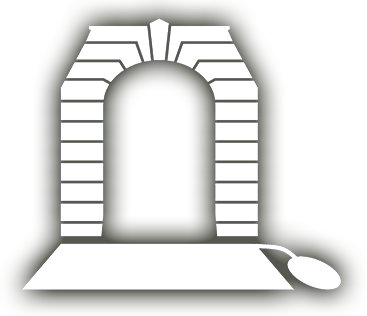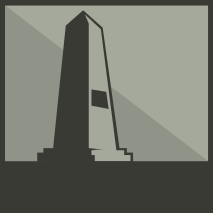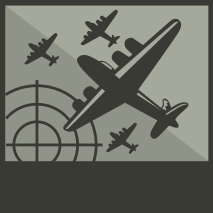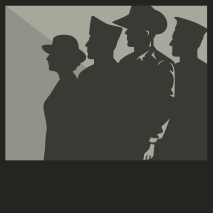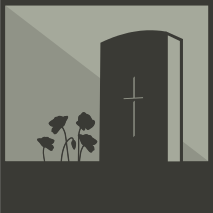LOCKTON, John Henry
| Service Number: | 8013 |
|---|---|
| Enlisted: | 13 March 1917 |
| Last Rank: | Private |
| Last Unit: | 51st Infantry Battalion (WW1) |
| Born: | Eurilpa, South Australia, 24 March 1890 |
| Home Town: | Boulder, Kalgoorlie/Boulder, Western Australia |
| Schooling: | Boulder Public School, Western Australia |
| Occupation: | Mill & Battery Hand |
| Died: | Rheumatic Fever, Hospital of St. John of God, Geraldton, Western Australia, 17 February 1936, aged 45 years |
| Cemetery: |
Utakarra Cemetery, Geraldton, Western Australia Catholic Section, Row 7, Plot 17. (Marker 347). |
| Memorials: | Boulder Roll of Honor |
World War 1 Service
| 13 Mar 1917: | Enlisted AIF WW1, 8013, 11th Infantry Battalion | |
|---|---|---|
| 30 Oct 1917: | Involvement Private, 8013, 11th Infantry Battalion, --- :embarkation_roll: roll_number: '10' embarkation_place: Melbourne embarkation_ship: HMAT Aeneas embarkation_ship_number: A60 public_note: '' | |
| 30 Oct 1917: | Embarked Private, 8013, 11th Infantry Battalion, HMAT Aeneas, Melbourne | |
| 16 Sep 1919: | Discharged AIF WW1, 8013, 51st Infantry Battalion (WW1) |
Help us honour John Henry Lockton's service by contributing information, stories, and images so that they can be preserved for future generations.
Add my storyBiography contributed by Paul Lemar
John was the son of William LOCKTON & Hanora (Nora) Gertrude MCCORMACK and was born on the 24th of March 1890 in Eurilpa, SA.
John was known as “Jack”.
His parents were married on the 20th of August 1887 in Willochra, SA.
His father was the son of William LOCKTON & Elizabeth GANLEY and was born on the 9th of February 1860 in New Park, Kapunda, SA.
His mother was the daughter of John MCCORMACK & Mary LARKEN and was born on the 25th of April 1864 in Kapunda, SA.
John was the second child born into this family of 6 children.
John’s grandfather, William LOCKTON, was born on the 5th of September 1826 in the parish of St George’s, London. On the 14th of October 1844 he enlisted into the 11th Regiment of Foot, commanded by Colonel Sir Michael Cray.
He was first quartered at Brompton Barracks, Chatham, were he went through his recruit drill, after which he was sent with a detachment to Ipswich Redouby (10 gun battery), where he stayed for 4 months.
On being recalled to Headquarters he got marching orders for service abroad, and on the 10th of August 1845 he sailed from Gravesend for Van Diemans Land (Tasmania) on the troopship Ramalees, under Major Singleton with 750 mixed troops and stores aboard.
Good weather prevailed during the voyage, but notwithstanding this the troops had a rough time as 6 men were served with only 4 men’s rations. They held drill every day on board and once a week in full marching order regardless of the state of the weather.
Four months later they arrived in Hobart on the 10th of December where John’s grandfather remained for 12 days before sailing again on the troopship Lady Franklin with 75 men (No.8 Company) aborad, bound for Spring Bay, Maria Island where they had to guard State prisoners, with the notorious Smith O’Brien, being one of them.
They remained here for nearly 2 years and were ordered to Launceston where for 15 months they escorted prisoners to Perth (TAS) from Launceston, a distance of 12 miles.
On receiving orders from Sydney, they marched from Launceston to Hobart (121 miles), where the embarked on the barque Sir Edward Paget, arriving in Sydney on the 28th of August, where they remained for 7 months, six weeks of which was spent guarding prisoners on Cockatoo Island, Parramatta, River.
Sailing for Adelaide in the ship Ratcliffe, arriving in March, they remained in Barracks for a week or two after which John’s grandfather went as coachman to the Commissariat General, which position he held for 2 years.
Then, through a reduction in the Regiment from 1000 to 750 men, John’s grandfather applied for and received a free discharge on the 1st of October 1850.
Unknown to the Military Authorities he had married the previous year and after receiving his discharge he then went with his wife to Bagot’s Station, about 5 miles from Kapunda, where he worked for 2 years. Then in May 1852, he started for the Bendigo Diggings in the barque Anna Dixon.
Making up a party of 6 they started on foot from Melbourne, paying a teamster £1 a piece to carry their swags to Forrest Creek, about 80 miles away. On arriving at the field they could not buy a tent so camped under boughs for 5 weeks in very wet weather.
John’s grandfather did quite well in his 3 month stay, taking 14lbs of pure gold out of one claim. They then moved to Mt Barker for 2 years before taking up land at Moppa Spring (near Greencock), where John’s father was born. They stayed here for 18 years and when the North land opened up, they took up land at Black Rock.
When John’s parents married in 1887 they took up land near Eurilpa, with John’s uncle Charles and his father became a farmer.
Their farm was on Sections 106, 108, and 123, Hundred of Eurilpa and contained 979 acres.
John gained 3 more siblings while the family lived here; Elizabeth, William and Agnes. Sadly little Alice died on the 7th of December 1897 aged 5 months.
After the death of Alice, the family moved to 2 Johnston Street, Boulder, Western Australia in 1899 where John’s father gained employment at the Kalguri Mine as a Pressman.
John attended the Boulder school and on leaving school he gained employment as a labourer.
He was a brilliant footballer and played for the Kalgoorlie Club in his youth.
Then on the 6th of May 1907 John gained employment at the Kalguri Mine as a Fitting Shop boy for 4 months and then became a Boiler Cleaner.
His father died on the 10th of February 1911 and they buried him in the Kalgoorlie Cemetery.
John remained living with his mother and later became a Mill and Battery Hand at the mine.
At the age of 26, John applied to enlist into the 1st AIF on the 15th of June 1916 in Boulder and on the 28th of June he attended his medical in Blackboy Hill Camp.
John was classified medically unfit for service as he had varicose veins and flat feet.
The following year, aged of 27, John reenlist into the 1st AIF on the 13th of March 1917 in Kalgoorlie and allotted the service number 8013 and posted to Base Depot in Blackboy Hill Camp.
He was then posted to the Trench Mortar Battery and then the Medium Trench Mortar Battery in Seymour, Victoria.
He spent nearly 3 months training with them and then on the 8th of August he was transferred to the 1st Depot Battalion in Broadmeadows were he was posted to the 11th Battalion, 27th Reinforcements.
John embarked from Melbourne on board HMAT A60 Aeneas and whilst on the voyage, he was admitted into the ships hospital for 7 days suffering from Erysipelas on his legs.
After spending Christmas 1917 on board the troopship he disembarked in Devonport, England on the 27th of December 1917 and marched into the 2nd Training Battalion in Sutton Veny.
John spent the next 3 months here in training and then proceeded to France as a reinforcement for the 51st Battalion.
He served in France, suffered a Gun Shot Wound to his left leg on the 24th of April 1918 and was evacuated to England. After he recovered he proceeded back to France on the 22nd of September and rejoined his Battalion.
After the signing of the Armistice on the 11th of November 1918, John remained with his Battalion for the next 6 months until the 10th of May when he and the last remaining members of the Battalion paraded on the Square at Aiseau at 9:15am and then marched to Charleroi to form No.52 Quota for demobilization.
Two days later John entrained from Charleroi and on the 20th of May John and his Battalion embarked for England.
The following day they disembarked in Southampton and marched into No.4 Command Depot in Hurdott.
John embarked from England on board HMAT City of Exeter on the 12th of July 1919 and disembarked in Fremantle on the 16th of August.
John was discharged from the AIF on the 16th of September 1919.
John returned home to his mother at 2 Johnston Street, Boulder, gained employment as a labourer and returned to playing football for the Boulder City Football Club.
He then gained employment with the WAGR & T (Western Australia Railway) as a Dresser at the Midland Junction Workshops and John and his mother moved to 24 Fifth Street, Mount Lawley.
In 1925 a permit was granted by the Geraldton Football Association to allow John to be transferred from the Boulder City Football Club to the Geraldton Railways Football Club (Blue & White).
In January 1936 John set out from Perth on a tour by car of the eastern goldfields and the Murchison accompanied by his brother-in-law Mr. Ian Stewart, and Mr. W. Stone, of Perth.
After leaving Wiluna they readied Geraldton on Sunday, January 26th and the same night the John, who up till then had been in the best of health, complained of a pain in the knee.
The following morning his ailment had apparently become worse and he entered the Hospital of St. John of God in Geraldton for treatment.
John appeared to be progressing satisfactorily until about the 13th of February when he became seriously ill.
His symptoms then indicated that he had rheumatic fever and he gradually becoming worse.
John died on Monday the 17th of February 1936 in the Hospital of St. John of God in Geraldton.
John’s funeral took place the following day on Tuesday morning in the Roman Catholic portion of the Utakarra Cemetery, the last rites being performed by the Rev. Father Gallagher. The pall-bearers were Messrs. L. J. Chapman, R. Skinner, M. Gershen, A. H. Milford, T. Roberts and A. E. Anderson, some of whom were members of the same battalion as John in the Great War.
John was buried in the Catholic Section, Row 7, Plot 17. (Marker 347).
Returned Soldiers' Death. — The flying at half-past on Tuesday of the flag at Birdwood House, the headquarters of the Geraldton Sub-Branch of the R.S.L., notified the passing of another returned soldier in the person of John Henry Lockton, formerly of the 51st Battalion of the Australian Infantry Forces. The deceased gentleman, who was only 45 years of age, died in the Hospital of St. John of God at Geraldton on Monday afternoon after an illness of only three weeks' duration.
The late Mr. Lockton's friends and relatives are extremely grateful to the Geraldton Sub-Branch and to the Council. Although he was not so well known in Geraldton, on news of his passing, flags were hung at half-mast on Birdwood House and the Council Chambers, and 51 members of the sub-branch paid their last respects to a fellow digger at the graveside. He was only 45 years of age when the call came.
Military
At the age of 27, John enlist into the 1st AIF on the 13th of March 1917 in Kalgoorlie and allotted the service number 8013 and posted to Base Depot in Blackboy Hill Camp.
He listed his mother, of 2 Johnston Street, Boulder, WA, as his next of kin.
On the 16th of April he was posted to the Trench Mortar Battery and then on the 19th of May he was posted to the Medium Trench Mortar Battery in Seymour, Victoria.
He spent nearly 3 months training with them and then on the 8th of August he was transferred to the 1st Depot Battalion in Broadmeadows.
On the 17th of September John was transferred to the 11th Battalion, 27th Reinforcements and then on the 30th of October John embarked from Melbourne on board HMAT A60 Aeneas.
On the 4th of November John was admitted into the ships hospital for 7 days suffering from Erysipelas on his legs.
After spending Christmas 1917 on board the troopship he disembarked in Devonport, England on the 27th of December 1917 and marched into the 2nd Training Battalion in Sutton Veny.
John spent the next 3 months here in training and on the 18th of March he was appointed as Acting Corporal for 2 weeks.
On the 1st of April 1918 John proceeded to France as reinforcement for the 51st Battalion and marched into the 4th ADBD (Australian Division Base Depot) in Calais.
Three days later he marched out to join the 51st Battalion ands was taken on strength with them on the 6th of April in the support line at Dernancourt.
The following day they were relieved and marched to just south of La Houssoye where they bivouacked for the night.
The following day the moved to the Somme Canal defences near Vaux-sur-Somme and relieved the 17th Battalion, Lancashire Fusiliers.
On the 11th of April they were relieved and marched to billets near Corbie where they were engaged in digging the Bonnay-Heilly defensive Bridgehead line.
On the 22nd of April they marched to Querrieu into billets and 2 days later they marched to 1 mile south east of Blangy Tronville.
Then at 10:10pm they moved forward in the attack near Monument Wood and immediately came under intense machine gun fire on their left from the direction of Bois-de-Aquenne.
When they had advanced about 1000 yards they met a belt of their own wire entanglement and while they were trying to get through the wire the enemy machine guns opened up on them from the wood on their left and inflicted heavy casualties.
John was one of these casualties, suffering from a Gun Shot Wound to his left leg.
The following day, ANZAC Day, he was admitted into the 2/3rd Home Counties Field Ambulance and was transferred to the 5th Casualty Clearing Station in Picquigny.
The next day he was transferred to the 10th General Hospital in Rouen and on the 27th of April John was evacuated to England on board HS St Patrick and admitted into the Richmond Military Hospital on Grove Road, Richmond.
John remained here for 18 days and was then transferred to the 3rd Australian Auxiliary Hospital in Dartford on the 15th of May.
After a further 9 days here he was discharged to No.3 Command Depot in Hurdcott on the 24th.
On the 29th of June he was posted to No.4 Command Depot in Hurdcott where he remained until the 23rd of August when he was posted to the Overseas Training Brigade in Longbridge Deverill.
On completing a further 4 weeks of training John proceeded back to France on the 22nd of September and marched into the AIBD (Australian Infantry Brigade Depot) in Le Havre.
Four days later he marched out to join his Battalion and was taken on strength with them on the 27th of September in billets at Guignemicourt.
They spent all of October here in training and held sporting events, with football and rugby matches.
On the 10th of November they marched to Ailly-sur-Somme and then entrained to Roisel. On arrival at Roisel they were greeted with the news that the Armistice had been signed.
Here they billeted in an old German POW compound near the railway station for 2 days before they moved by light railway and detrained at Brancourt-le-Grand. They then marched to Fresny-le-Grand and billeted in the old German POW compound which had recently been used by the enemy as a hospital.
Whilst here they continued to play their sports games and trained until the 22nd of November when they marched to St Souplet. The following day they continued their march through Favril to Le-Cateau, continuing to Le-Grand-Payt and then onto Sains.
On the 26th of November they marched to Sivry, Belgium where they held drill, physical exercises and Route marches.
They remained here until the 13th of December when they marched to Silenrieux, Florennes and Palaen before arriving at Bouvignes on the 16th.
Bouvignes was situated on the River Meuse about one mile north of Dinant and they spent Christmas 1918 here in the village.
January and February 1919 was spent in educational classes in preparation for repatriation and demobilization. Classes included; boot making, bookkeeping, carpentry, mechanics, fitting & turning, fruit growing, wool classing and farriery and the men of the 51st began to march out for return to Australia.
Then on the 8th of March they marched out to Denee and then to Le Roux the following day. Then on the 19th of March the 50th & 51st Battalion amalgamated and were renamed the 20-51st Battalion.
On the 23rd of March John was detached for duty with the Concert Party for 11 days and then rejoined his Battalion.
On the 11th of April they moved to Aiseau and by the end of April there was only 16 Officers and 137 ranks left in the Battalion.
On the 10th of May John and the last remaining members of the Battalion paraded on the Square at Aiseau at 9:15am and then marched to Charleroi to form No.52 Quota for demobilization.
Two days later they entrained from Charleroi and on the 20th of May John and his Battalion embarked for England.
The following day they disembarked in Southampton and marched into No.4 Command Depot in Hurdott.
John embarked from England on board HMAT City of Exeter on the 12th of July 1919 and disembarked in Fremantle on the 16th of August.
John was discharged from the AIF on the 16th of September 1919 and awarded the Star, British War & Victory Medals.
He was also issued a Silver Sports Medal (football) on the 6th of August 1920.

